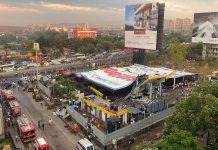
Bangladesh has been gripped by a wave of violent protests over the past few weeks. The anti-quota demonstrations have turned deadly, with 22 more individuals losing their lives in the latest clashes, bringing the total death toll to 28. This article delves into the complex dynamics of these protests, the underlying reasons, and their far-reaching implications.
Background of the Protests
The quota system in Bangladesh, which reserves a significant percentage of government jobs and university seats for certain groups, has long been a contentious issue. Initially designed to provide opportunities to disadvantaged groups, many now argue that it has become outdated and unfair, sparking widespread dissatisfaction among the general population.
Escalation of Violence
The protests, which began as peaceful demonstrations, have escalated dramatically. A timeline of key events reveals a series of confrontations between protesters and law enforcement, with each clash intensifying the anger and resolve of the demonstrators. The most recent violence, resulting in 22 deaths, marks a tragic peak in this ongoing conflict.
Government Response
In response to the unrest, the Bangladeshi government has issued a series of statements and taken various actions aimed at restoring order. While some political factions support the government’s measures, others criticize them as heavy-handed and insufficiently responsive to the protesters’ demands. The tension within the political landscape adds another layer of complexity to the situation.
Impact on Society
The protests have significantly disrupted daily life in Bangladesh. Public transportation has been halted, businesses closed, and schools shut down. The media, both traditional and social, play a crucial role in shaping public perception, often exacerbating the tensions with their coverage.
International Reactions
The international community has not remained silent on the issue. Foreign governments and global organizations have expressed their concern, urging the Bangladeshi authorities to exercise restraint and engage in dialogue with the protesters. Media outlets around the world are also covering the events, drawing global attention to the crisis.
Voices from the Ground
Personal stories from those directly involved in the protests highlight the human cost of the conflict. Protesters share harrowing tales of violence and loss, while law enforcement officers and government officials provide their perspectives on the challenges of maintaining order amidst chaos.
Analysis of the Quota System
At the heart of the protests is the controversial quota system. Critics argue that it perpetuates inequality and hinders merit-based advancement, while supporters claim it is necessary for ensuring representation and opportunities for marginalized groups. This section provides a detailed analysis of the arguments on both sides.
Comparative Perspective
Looking beyond Bangladesh, similar quota-related conflicts have arisen in other countries. This comparative perspective sheds light on how different nations have addressed such issues, offering potential lessons and insights for Bangladesh.
Economic Implications
The economic impact of the protests is substantial. The immediate effects include disruption of business activities and loss of productivity, while the long-term consequences could affect investor confidence and economic stability.
Human Rights Concerns
Human rights organizations have raised alarms about the treatment of protesters and the excessive use of force by law enforcement. Reports document instances of human rights violations, adding another dimension to the crisis.
Role of Educational Institutions
Students and universities have been at the forefront of the protests. The involvement of young, educated individuals underscores the depth of dissatisfaction with the current system. Educational leaders have also voiced their concerns, calling for a reevaluation of the quota policy.
Future of the Protests
As the situation continues to evolve, experts weigh in on potential outcomes. While some foresee a prolonged period of unrest, others believe that dialogue and compromise could lead to a resolution. This section explores the possible future scenarios for Bangladesh.
Conclusion
In conclusion, the anti-quota protests in Bangladesh are a manifestation of deep-seated grievances and demands for change. The government’s response, the societal impact, and the international reactions all contribute to the complexity of the situation. As the country navigates this tumultuous period, the hope for a peaceful and fair resolution remains.
FAQs
What is the quota system in Bangladesh? The quota system reserves a significant percentage of government jobs and university seats for certain groups, including ethnic minorities, women, and descendants of freedom fighters.
Why did the protests start? The protests began due to widespread dissatisfaction with the quota system, which many believe is outdated and unfair, limiting opportunities for the general population.
How has the government responded to the protests? The government has issued statements and taken actions to restore order, though these measures have been met with mixed reactions from different political factions.
What are the international reactions to the protests? The international community, including foreign governments and organizations, has expressed concern and urged the Bangladeshi authorities to exercise restraint and engage in dialogue with the protesters.
What could be the possible outcomes of these protests? Possible outcomes range from a prolonged period of unrest to a resolution achieved through dialogue and compromise, with the potential for significant changes to the quota system.

































